The name of this pub recalls the industrial pioneer, from nearby Dudley, who developed new methods of producing iron, so helping to pave the way for the Industrial Revolution. The shortage of charcoal, in the early 17th century, led to local experiments in the use of coal by Lord Dudley, the leading local landowner, and his son, Dud Dudley. It was not until 1709 that Abraham Darby successfully smelted iron ore on a commercial basis.
Text about the history of The Abraham Darby.
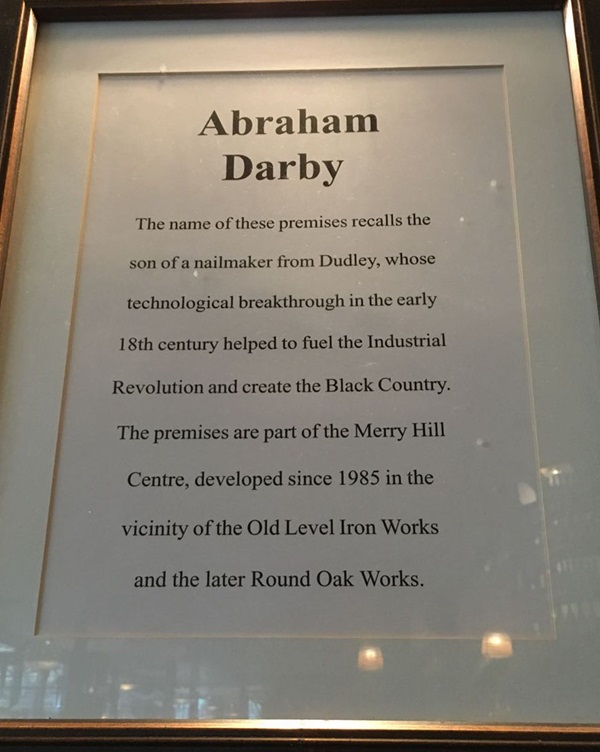
The text reads: The name of these premises recalls the son of a nail-maker from Dudley, whose technological breakthrough in the early 18th century helped to fuel the Industrial Revolution and create the Black Country. The premises are part of the Merry Hill Centre, developed since 1985 in the vicinity of the Old Level Iron Works and the later Round Oak Works.
Prints and text about The Abraham Darby.
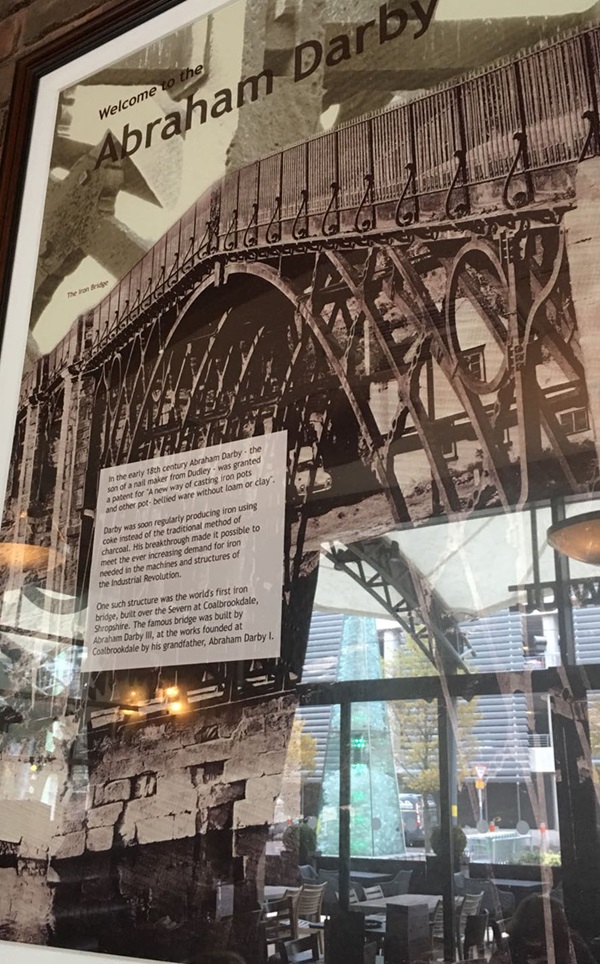
The text reads: In the early 18th century Abraham Darby – the son of a nail-maker from Dudley – was granted a patent for “a new way of casting iron pots and other pot-bellied ware without loam or clay”.
Darby was soon regularly producing iron using coke instead of the traditional method of charcoal. His breakthrough made it possible to meet the ever increasing demand for iron needed in the machines and structures of the Industrial Revolution.
One such structure was the world’s first iron bridge, built over the Severn at Coalbrookdale, Shropshire. The famous bridge was built by Abraham Darby III, at the works founded at Coalbrookdale by his grandfather, Abraham Darby I.
An illustration and text about industries in Brierley Hill.
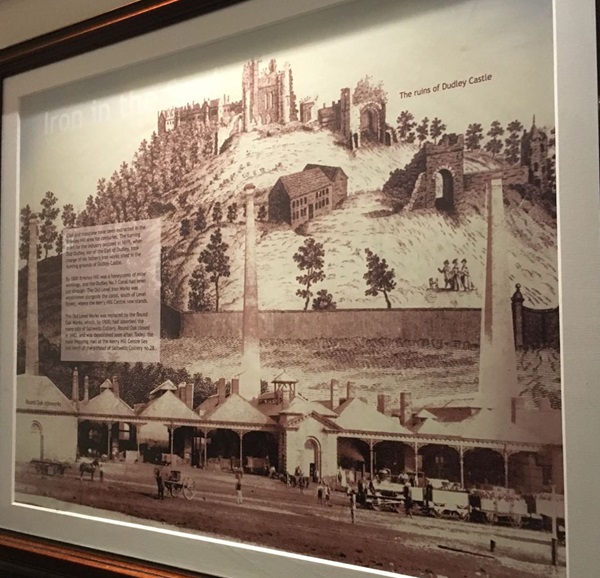
The text reads: Coal and ironstone have been extracted in the Brierley Hill area for centuries. The turning point for the industry occurred in 1619, when Dud Dudley, son of the Earl of Dudley, took charge of his father’s iron works sited in the hunting grounds of Dudley Castle.
By 1800 Brierley Hill was a honeycomb of mine workings, and the Dudley No.1 Canal had been cut through. The Old Level Iron Works was established alongside the canal, south of Level Street, where the Merry Hill Centre now stands.
The Old Level Works was replaced by the Round Oak Works, which, by 1900, had absorbed the many pits of Saltwells Colliery. Round Oak closed in 1982, and was demolished soon after. Today, the main shopping mall at the Merry Hill Centre lies just north of the pithead of Saltwells Colliery no.28.
A photograph and text about Brierley Hill.
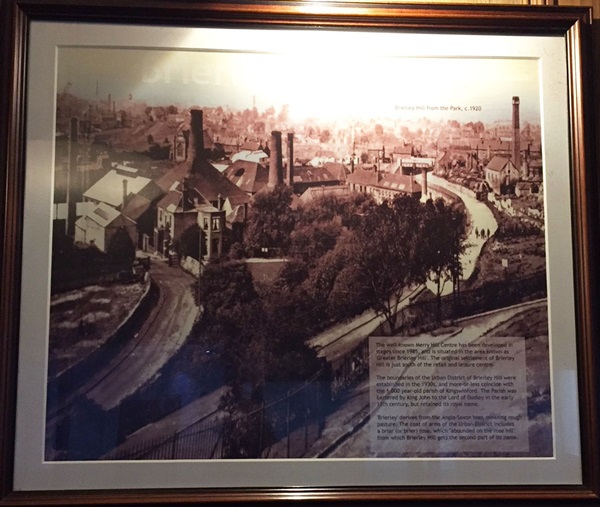
The text reads: The well-known Merry Hill Centre has been developed in stages since 1985, and is situated in the area known as Greater Brierley Hill. The original settlement of Brierley Hill is just south of the retail and leisure centre.
The boundaries of the Urban District of Brierley Hill were established in the 1930s, and more or less coincide with the 1,000 year old parish of Kingswinford. The parish was bartered by King John to the Lord of Dudley in the early 13th century, but retained its royal name.
‘Brierley’ derives from the Anglo-Saxon ‘brer’, meaning rough pasture. The coat of arms of the Urban District includes a briar (or brier) rose, which “abounded on the rose hill” from which Brierley Hill gets the second part of its name.
A sculpture entitled The Blacksmith in Abstract, by Gerry Mulholland.
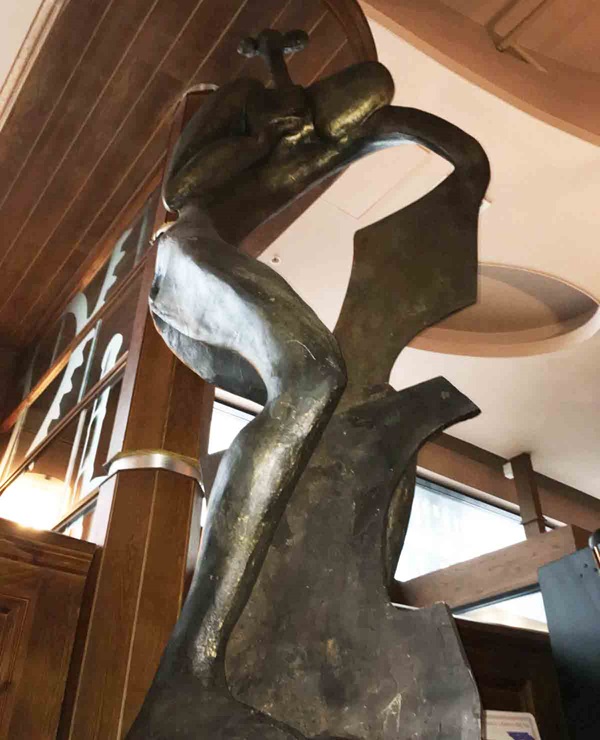
External photograph of the building – main entrance.
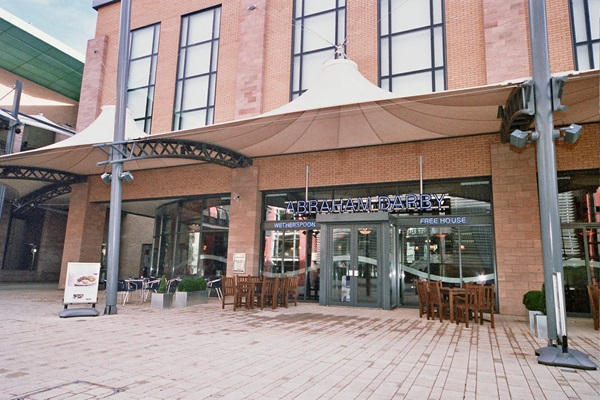
If you have information on the history of this pub, then we’d like you to share it with us. Please e-mail all information to: pubhistories@jdwetherspoon.co.uk